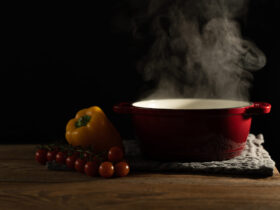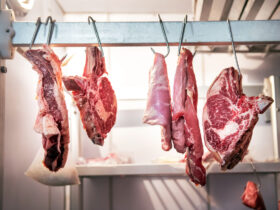Foods can transmit diseases through chemical, physical, or biological contamination. Bacteria, viruses, parasites, and fungi are the main culprits. Symptoms include abdominal cramps, nausea, vomiting, and diarrhea. Children, the elderly, and immunocompromised individuals are particularly vulnerable.
Avoiding cross-contamination
Cross-contamination, where pathogens are transferred from one surface to another, is often the cause of foodborne illnesses. Good personal hygiene is crucial to prevent this – wash hands thoroughly after every contact with potential sources of contamination.

Separation of raw and cooked foods in the kitchen, separate work areas, and regular cleaning of equipment and cutting boards are crucial. Foods should be carefully stored to prevent contact between raw and ready-to-eat products, and direct contact with food should be made using appropriate utensils or disposable gloves.
Once you have cut raw meat or fish on a cutting board, it is extremely important to thoroughly clean the cutting board, knife, and hands before cutting other foods on it. For example, you should not simply cut a tomato on the same cutting board without performing these cleaning steps first.
Contaminated work surfaces and cutting boards, especially those that have come into contact with raw meat or fish, are a potential source of cross-contamination. These surfaces can harbor dangerous bacteria that can cause serious food poisoning when transferred to other foods that are not cooked.
In particular, foods that are not cooked, such as fresh salads, fruit, or already cooked dishes, are susceptible to cross-contamination. When these foods come into contact with contaminated surfaces, bacteria can quickly multiply, leading to health risks.
Time and temperature
Time and temperature are crucial to keeping pathogens at bay. Most pathogens thrive between 7°C and 57°C – the danger zone. Spending over four hours in this zone makes food unsafe. While cooking can kill some pathogens, it doesn’t necessarily destroy the toxins they produce. Controlling the time spent in the danger zone is essential to prevent foodborne illnesses.

Proper food storage
Check incoming food for hygiene, temperature, and expiration dates. Reject items that do not meet standards. Immediate storage under the correct conditions is important. Regular monitoring and maintenance of refrigeration units with precise temperatures for different food categories are crucial to slowing down pathogens and maintaining quality.
- Meat and poultry at 0°C to 4°C
- Fish and seafood at 0°C to 2°C
- Eggs after day 18 at 5°C to 8°C
- Dairy products at 4°C to 10°C
- Fruits and vegetables at 4°C to 7°C
- Frozen food and ice cream at -18°C to -15°C
It’s ideal to have separate refrigerators for each of the categories mentioned above. If necessary, a single unit can be divided into sections. The front area of the refrigerator is warmer, while the back, closer to the cooling unit, is colder.

Food should be adequately cooled before storing in the refrigerator, stored in clean containers, wrapped, and clearly labeled – with contents and date. Raw products should be stored below and separately from cooked foods to avoid drip cross-contamination.
The “first in, first out” (FIFO) principle should be applied. Older items should be placed in front, while newer items or products should be placed at the back.

Dry storage is used for foods such as canned goods, spices, sauces, grains, and staple foods such as flour and sugar, as well as for some fruits and vegetables that do not require refrigeration and have a short shelf life. As with any storage, the area should be clean, with adequate ventilation and air circulation. Cleaning supplies should be stored in a separate location.
HACCP
HACCP (Hazard Analysis and Critical Control Points) is a scientific food safety program originally developed for astronauts. It systematically addresses the causes of foodborne illnesses and aims to predict and prevent them. It covers biological, chemical, and physical hazards, such as bacteria, viruses, cleaning products, as well as foreign objects like glass or wood.
HACCP includes: risk analysis, identification of critical control points, setting of critical limits, monitoring, deviation action plans, records, and verification systems.













Leave a Reply
View Comments